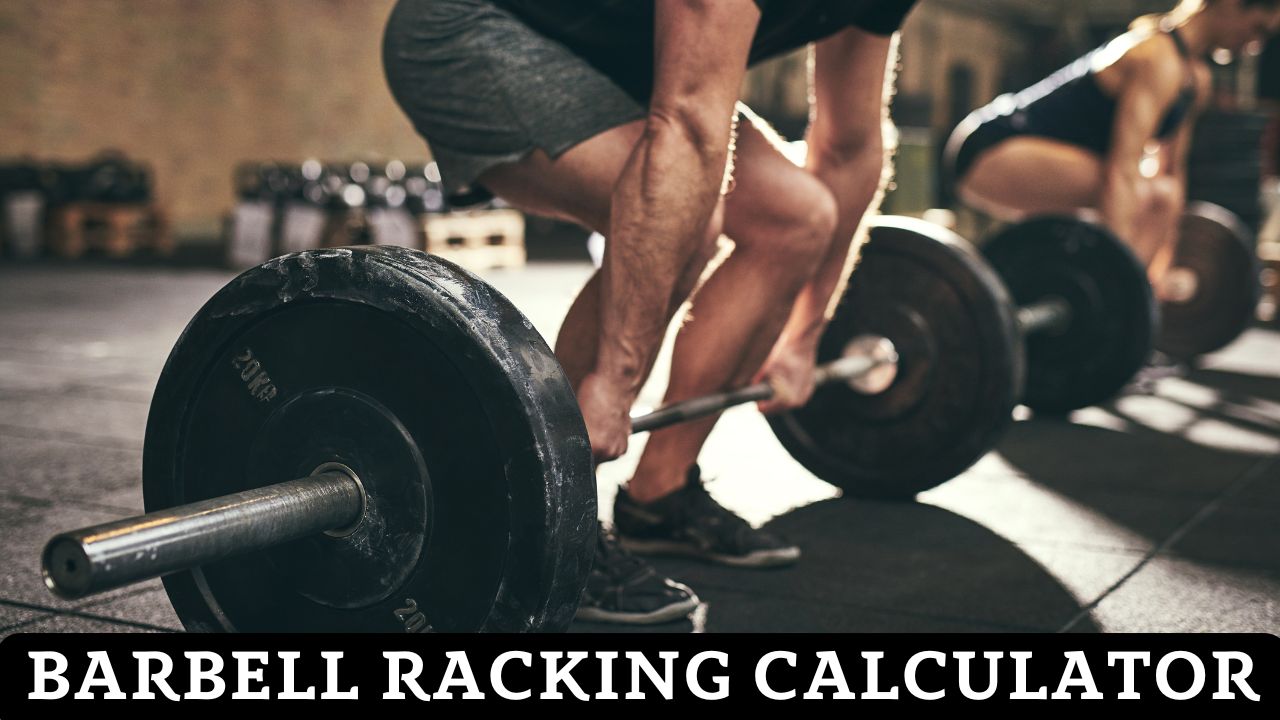🏋️ Barbell Plate Loading Calculator
Calculate optimal plate combinations for any barbell weight with instant kg/lbs conversion

How to Use the Barbell Plate Calculator
The Barbell Plate Calculator determines the optimal plate combination for any target weight instantly. Whether you’re powerlifting, Olympic weightlifting, or bodybuilding, this tool ensures proper weight loading with balanced distribution on both sides of the barbell.
Proper plate loading is critical for safe lifting and bar stability. Research shows that unbalanced loading can compromise lifting mechanics and increase injury risk. Our calculator uses an optimized algorithm to suggest the most efficient plate combination using the largest plates first, following International Weightlifting Federation (IWF) standards.
Simply enter your target weight, select your barbell type (Olympic men’s 20kg, women’s 15kg, training bar, or custom), choose your available plates, and calculate. The tool works with both kilograms and pounds, automatically converting between units. Perfect for gym owners planning equipment purchases, athletes training at new facilities, or anyone learning proper barbell loading techniques.
Standard Barbell & Plate Specifications
| Barbell Type | Weight (kg) | Weight (lbs) | Primary Use |
|---|---|---|---|
| Olympic Men’s | 20 kg | 44 lbs | Powerlifting, Olympic Weightlifting |
| Olympic Women’s | 15 kg | 33 lbs | Women’s Competition, Training |
| Training Bar | 10 kg | 22 lbs | Technique Work, Beginners |
| Youth/Technique Bar | 5 kg | 11 lbs | Youth Training, Rehabilitation |
Note: Olympic barbells must meet IWF specifications for competition use. Men’s bars are 2.2m long with 28mm diameter shaft, women’s bars are 2.01m with 25mm diameter. All Olympic bars have rotating sleeves for dynamic lifts.
Standard Olympic Plate Weights
🔴 Kilogram Plates (Metric)
Heavy Plates: 25kg (red), 20kg (blue), 15kg (yellow) – Used for main loading in strength training and competition lifts. These colored plates follow IWF color coding standards for easy identification.
Medium Plates: 10kg (green), 5kg (white), 2.5kg – Standard incremental loading plates found in most gyms. Essential for progressive overload training following the principle of gradual strength adaptation.
Change Plates: 1.25kg, 0.5kg, 0.25kg – Micro-loading plates for advanced lifters making small increases. Critical for breaking through plateaus with 1-2% load increases as recommended by strength coaches.
🔵 Pound Plates (Imperial)
Heavy Plates: 45lbs (red), 35lbs (yellow), 25lbs (green) – Primary loading plates in US gyms. The 45lb plate is the most common, with four plates (two per side) totaling 225lbs including the 45lb bar – a significant benchmark in powerlifting.
Medium Plates: 10lbs, 5lbs – Standard incremental plates for progressive loading. Allow 20lb jumps (10lbs per side) or 10lb jumps (5lbs per side) for controlled progression.
Change Plates: 2.5lbs, 1.25lbs – Micro-loading for advanced lifters. Enable small 5lb or 2.5lb total increases for breaking through strength plateaus. Learn more about barbell training techniques.
Proper Plate Loading Technique
✅ Correct Loading Order
1. Start with Largest Plates: Always load the heaviest plates first, placing them closest to the bar collar (innermost position). This creates the lowest center of gravity and maximum stability during lifts.
2. Progress to Smaller Plates: Work outward, loading progressively smaller plates. A typical loading might be: 25kg → 20kg → 5kg → 2.5kg (from collar outward). This sequence prevents plates from shifting and ensures balanced distribution.
3. Secure with Collars: Always use spring collars or lock-jaw collars to secure plates before lifting. Loose plates can slide during dynamic movements, causing dangerous imbalances. Check gym equipment guides for proper collar use.
4. Verify Both Sides: Before each set, visually confirm equal loading on both sides. Even experienced lifters occasionally load unevenly. An imbalanced bar compromises form and increases injury risk, especially on heavy compound movements.
Barbell Loading FAQs
❓ How accurate is the plate calculator?
The calculator is 100% mathematically accurate for weight combinations using your selected available plates. It employs a greedy algorithm that prioritizes largest plates first, matching how experienced lifters load barbells. If an exact weight cannot be achieved with available plates, the calculator will notify you and suggest the closest achievable weight.
🏋️ What if I can’t make my exact target weight?
If your target weight cannot be achieved exactly, you have three options: (1) Add more plate denominations – micro plates (0.5kg, 0.25kg, or 1.25lbs) enable finer increments, (2) Adjust your target weight to the nearest achievable value, typically within 2.5-5lbs/1-2kg, or (3) Use fractional plates or magnetic microplates that attach to standard plates for precision loading. Many advanced powerlifters use fractional plates for 1-2% increases.
⚖️ Why should I load largest plates first?
Loading largest plates closest to the collar (innermost) creates optimal weight distribution and bar stability. This configuration lowers the center of gravity, reduces bar wobble during lifts, and minimizes plate movement. It also follows gym etiquette and safety standards. Imagine the difference between a dumbbell (weight at ends) versus having weight spread out – concentrated weight is more stable for dynamic movements like cleans and snatches.
🔄 Should I calculate in kg or lbs?
Use the unit system matching your gym’s equipment. Most international gyms use kilograms (Olympic standard), while US commercial gyms typically use pounds. For competition lifters, train in your competition unit: IWF/Olympic weightlifting uses kg, USA Powerlifting accepts both, and most strongman uses lbs in America, kg internationally. Our calculator converts seamlessly between units, so you can plan workouts in either system. Learn about kg to lbs conversion for powerlifting.
💪 How do I know what plates my gym has?
Most commercial gyms stock standard plates: 45, 35, 25, 10, 5, and 2.5 lbs (or 25, 20, 15, 10, 5, 2.5 kg). Check your gym’s plate tree or ask staff about available plates. Specialized powerlifting gyms often have fractional plates (1.25, 0.5, 0.25 kg) and calibrated competition plates. Home gyms may have limited plate sets – select only your available plates in the calculator for accurate combinations. You can also explore our workout planning tools for comprehensive training programs.
🎯 What’s the minimum and maximum I can load?
Minimum: Just the barbell (20kg/44lbs men’s, 15kg/33lbs women’s, or lighter training bars). Maximum: Olympic barbells are rated for 1000-1500 lbs depending on quality. Competition bars support 500+kg (1100+lbs). Home gym bars vary 200-700 lbs. Check your bar’s weight rating (usually stamped on sleeve). For safety, never exceed rated capacity, and ensure collars, plates, and racks can handle the load. Commercial gym equipment typically supports heavier loads than home equipment.
🏋️ Safety & Equipment Disclaimer
This barbell plate calculator provides weight loading combinations for educational purposes. Always verify weight accuracy before lifting. Use proper collars to secure all plates. Ensure balanced loading with equal weight on both sides. Never attempt lifts beyond your current strength level. Consult certified strength coaches or personal trainers for proper lifting technique and progressive training programs. This tool is for informational purposes only and does not replace professional coaching or safety protocols.
Related
- Workout Plans for Men
- Badminton Calories Burned Calculator
- Boxing Calories Burned Calculator
- Plank Calories Burned Calculator
- Burpee Calories Burned Calculator
- Crunches Calories Burned Calculator
- Sit-Up Calories Burned
- Zumba Calories Burned Calculator
- Pull Up Calories Burned Calculator
- Push-Up Calories Burned Calculator
- Home Activities Calories Burned Calculator
- Exercise Calories Burned Calculator
- Running Calorie Calculator
- Walking Calorie Burned Calculator

Manish is a NASM-certified fitness and nutrition coach with over 10 years of experience in weight lifting and fat loss fitness coaching. He specializes in gym-based training and has a lot of knowledge about exercise, lifting technique, biomechanics, and more.
Through “Fit Life Regime,” he generously shares the insights he’s gained over a decade in the field. His goal is to equip others with the knowledge to start their own fitness journey.
